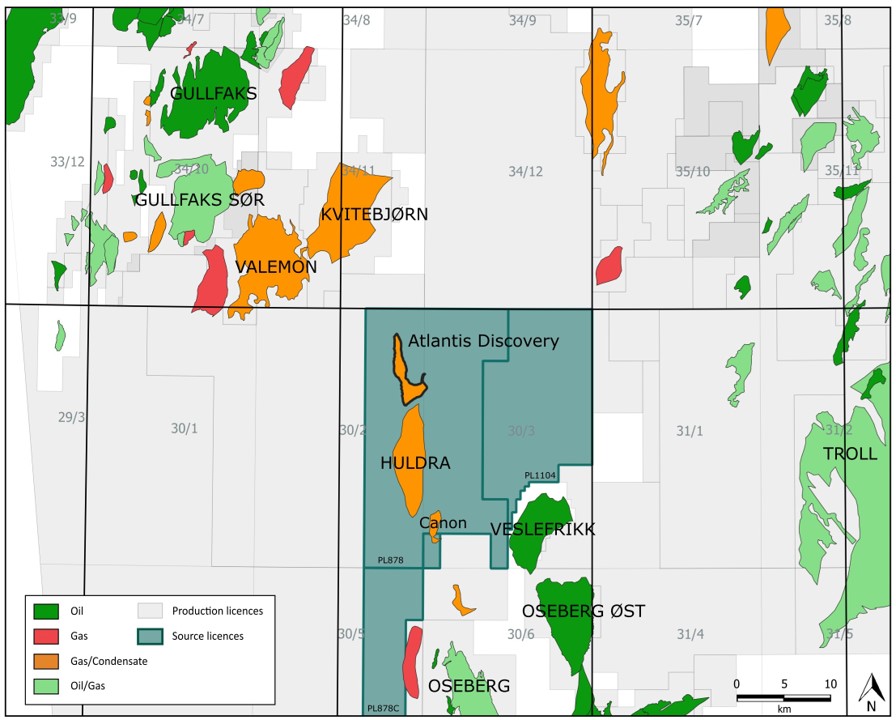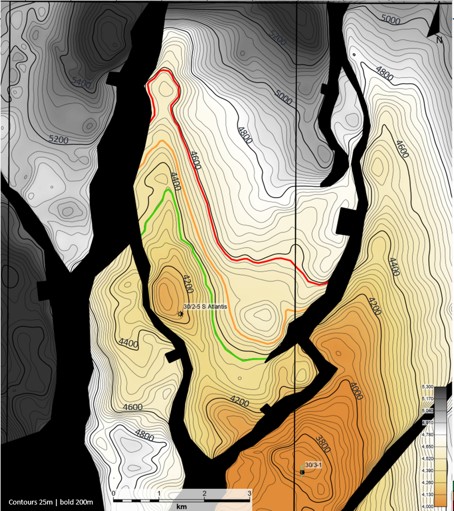ATLANTIS
OVERVIEW
License:
PL 878 / PL 878B / PL878C
Blocks:
30/2, 30/3, 30/5
Source Energy:
20%
Partners:
Equinor 80% (operator)
The Atlantis gas/condensate discovery was discovered in July 2020 by the 30/2-5S well. Atlantis is a discovery down-flank from the Huldra gas field that produced 22.7 million Sm3 oil equivalents between 2001 and 2014.
The Atlantis field is a 3-way structure against a large sealing fault to the south. The exploration well encountered a gas column of about 160 meters in the Brent Group (the Tarbert, Ness, Etive and Rannoch Formations). The gas/water contact was not encountered. The thick sand-filled reservoir and high reservoir pressure will enable an efficient drainage and a high recovery of the discovery.
Norwegian Offshore Directorate (NOD) reports the discovery to contain 10.4 million Sm3 of recoverable oil equivalents (65 MMboe). Since the gas-water contact (GWC) is not proven, a significant upside potential exists in the discovery.
The PL878 license contains several additional analogue exploration prospects that will be explored as part of the Atlantis maturation.


Development timeline
The Atlantis discovery will be developed as a subsea development with 2-3 production wells tied back to a nearby host platform. Currently, the Kvitebjørn Field or the Oseberg Field are the most likely tie-in hosts. The Canon discovery (2.1 million Sm3 o.e. gross) to the south of Atlantis (in PL878) may be developed together with the Atlantis by a tie-in to the Atlantis subsea template. The first production is currently estimated to 2030/2031.
additional exploration in the PL878/ PL878B/ PL878C License
The license contains a significant upside / follow-up exploration potential that will be explored before and after the Atlantis production start-up.
There are identified prospects in both the Brent formation (Fossegrim and Minotaur prospect), the Statfjord formation (Atlantis Statfjord prospect), Triassic formation (Albus prospect) and in the Upper Jurassic formation (Sculptor).

